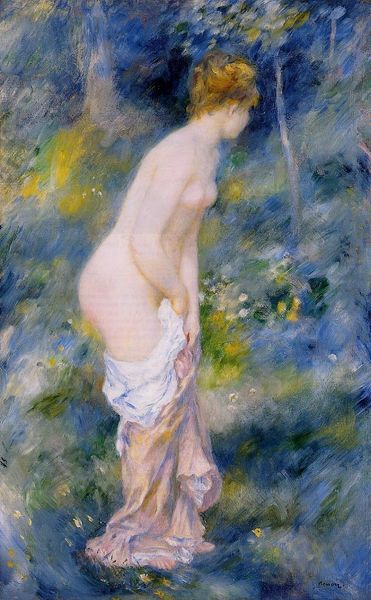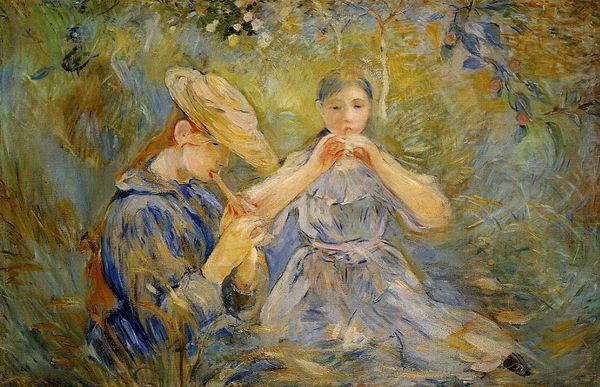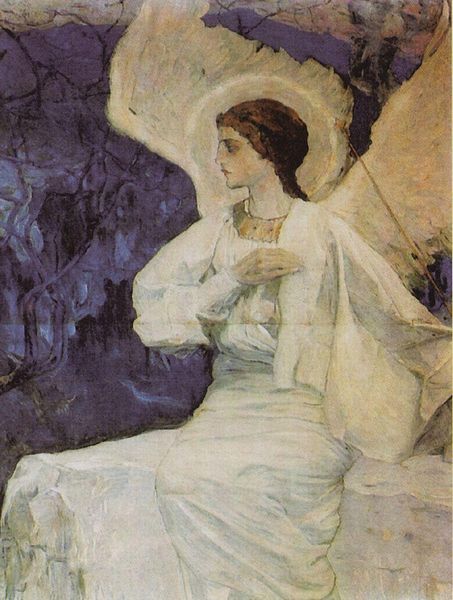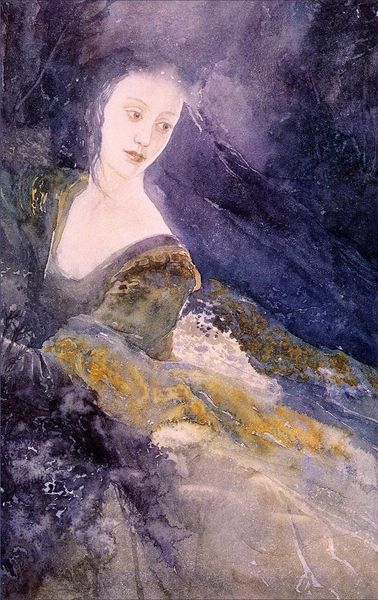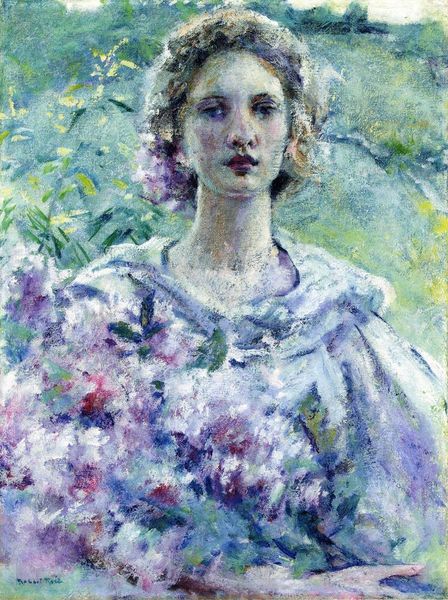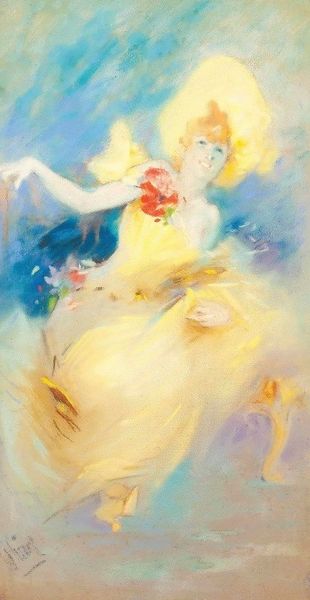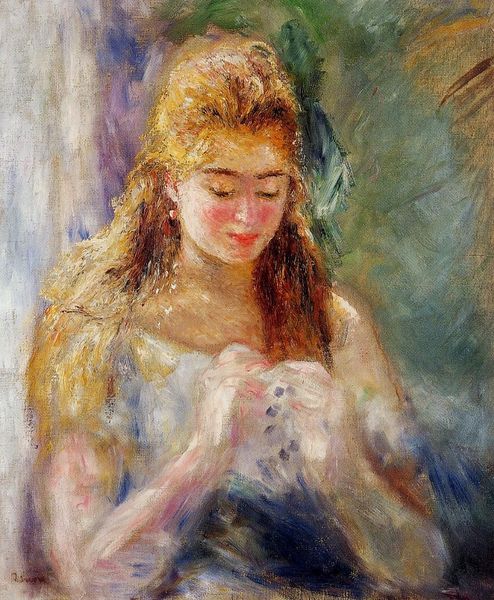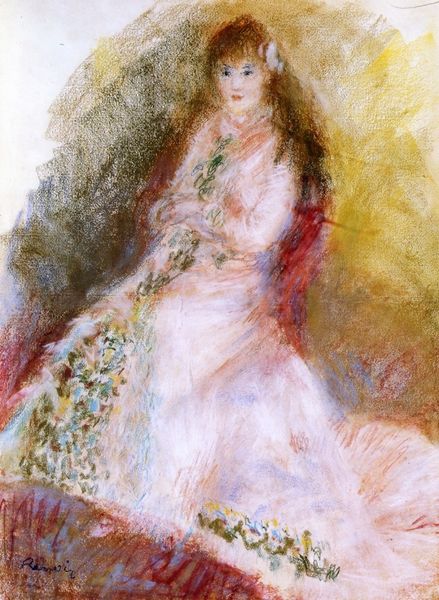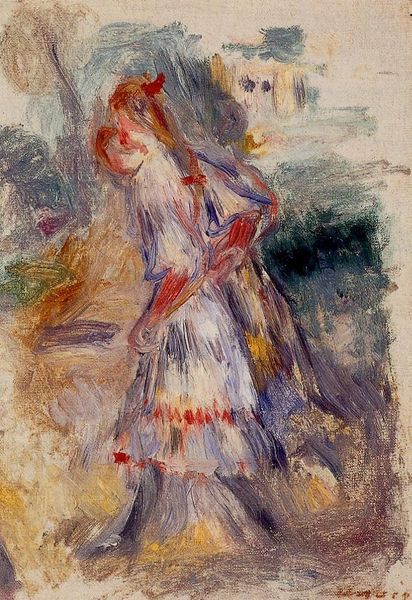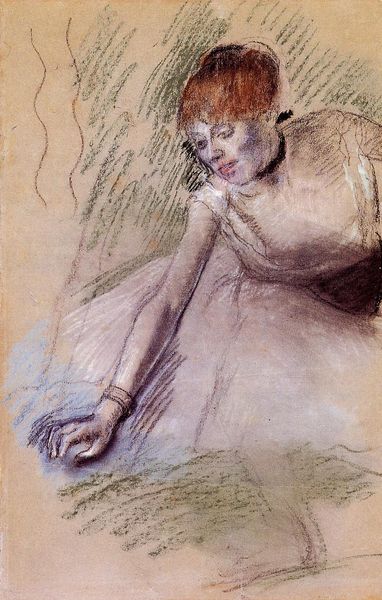
painting, plein-air, pastel
#
portrait
#
painting
#
impressionism
#
plein-air
#
landscape
#
impressionist landscape
#
pastel
#
watercolor
Copyright: Public domain
Pierre-Auguste Renoir captured this ethereal image of Spring, likely in the late 19th century, with pastels and gouache on paper. During this period in France, a deeply rooted academic tradition in the arts dictated the representation of women either as allegorical figures or domestic subjects. Renoir, while being part of the impressionist movement, still drew from the pervasive attitudes of the period. His "Spring" presents a vision of idealized femininity: pale skin, rosy cheeks, blonde hair and an association with nature. However, the hazy, dream-like quality of the image, and the model's engaging glance, pushes beyond passive objectification. Renoir said, "Why shouldn't art be pretty? There are enough unpleasant things in the world." Here he asks us to consider beauty as a valid and valuable subject in itself. What are your thoughts about this? Despite its aesthetic appeal, the image perpetuates the limited roles assigned to women. It invites us to reflect on how representations of gender and beauty are woven into the fabric of art history.
Comments
No comments
Be the first to comment and join the conversation on the ultimate creative platform.

